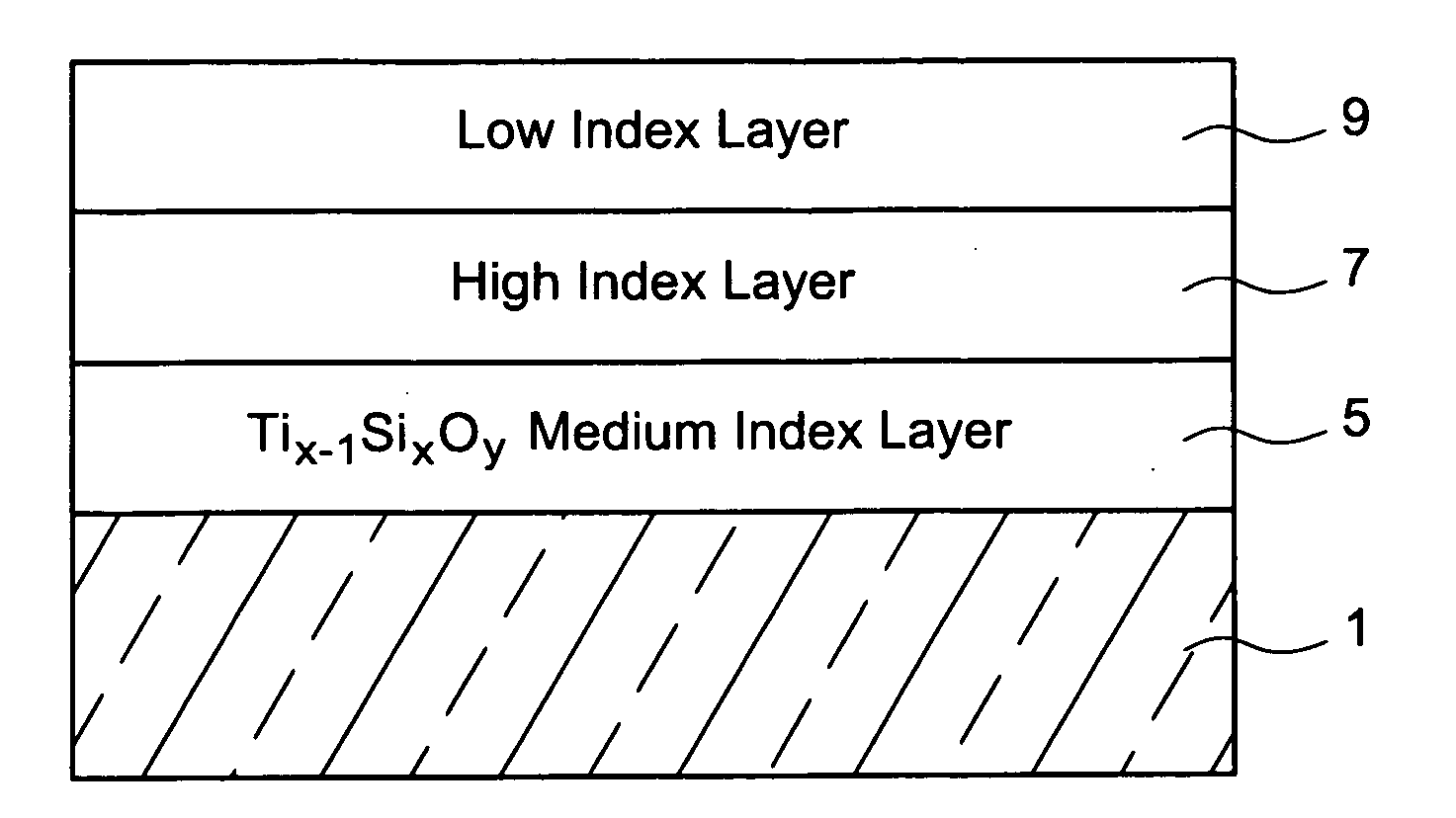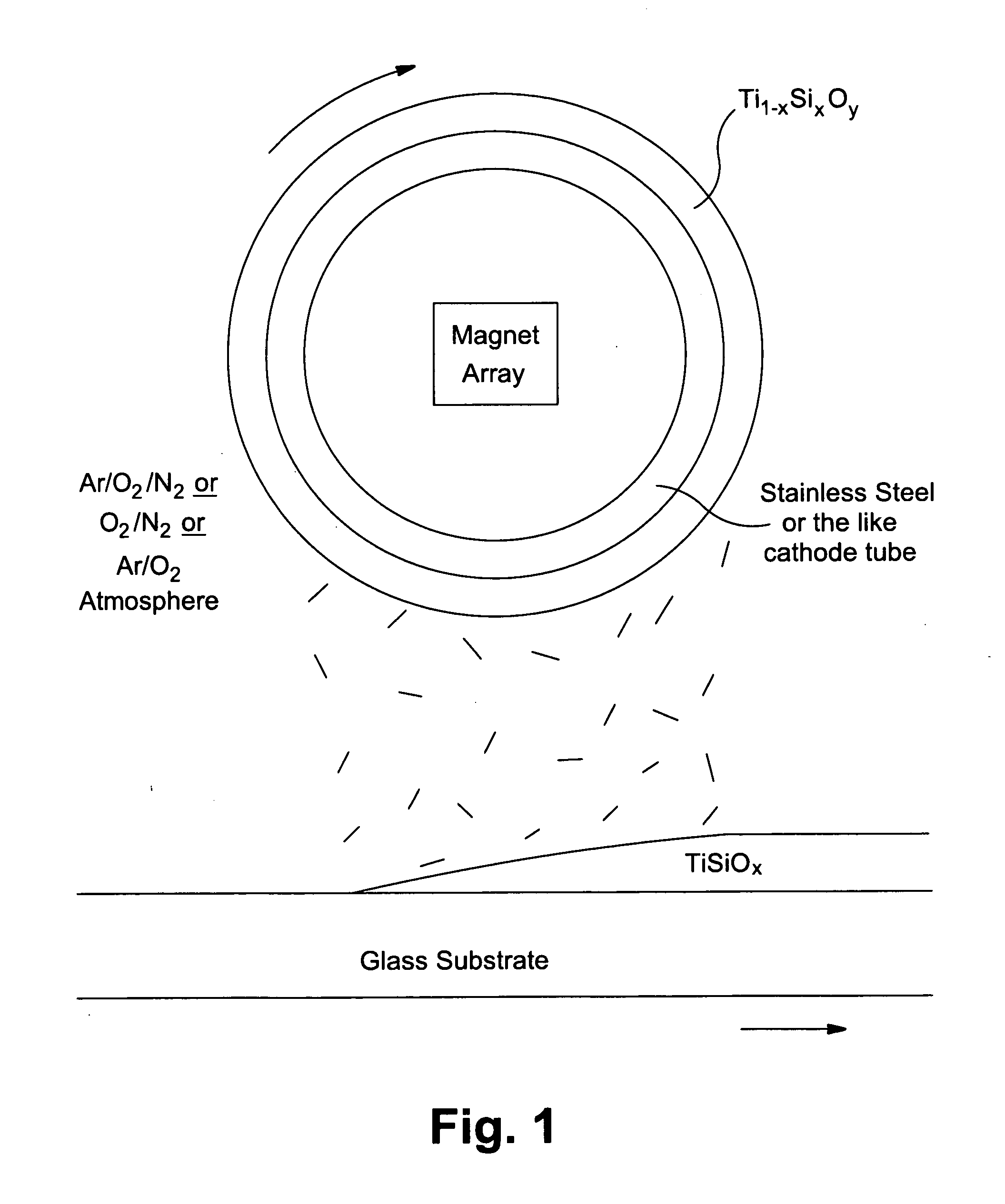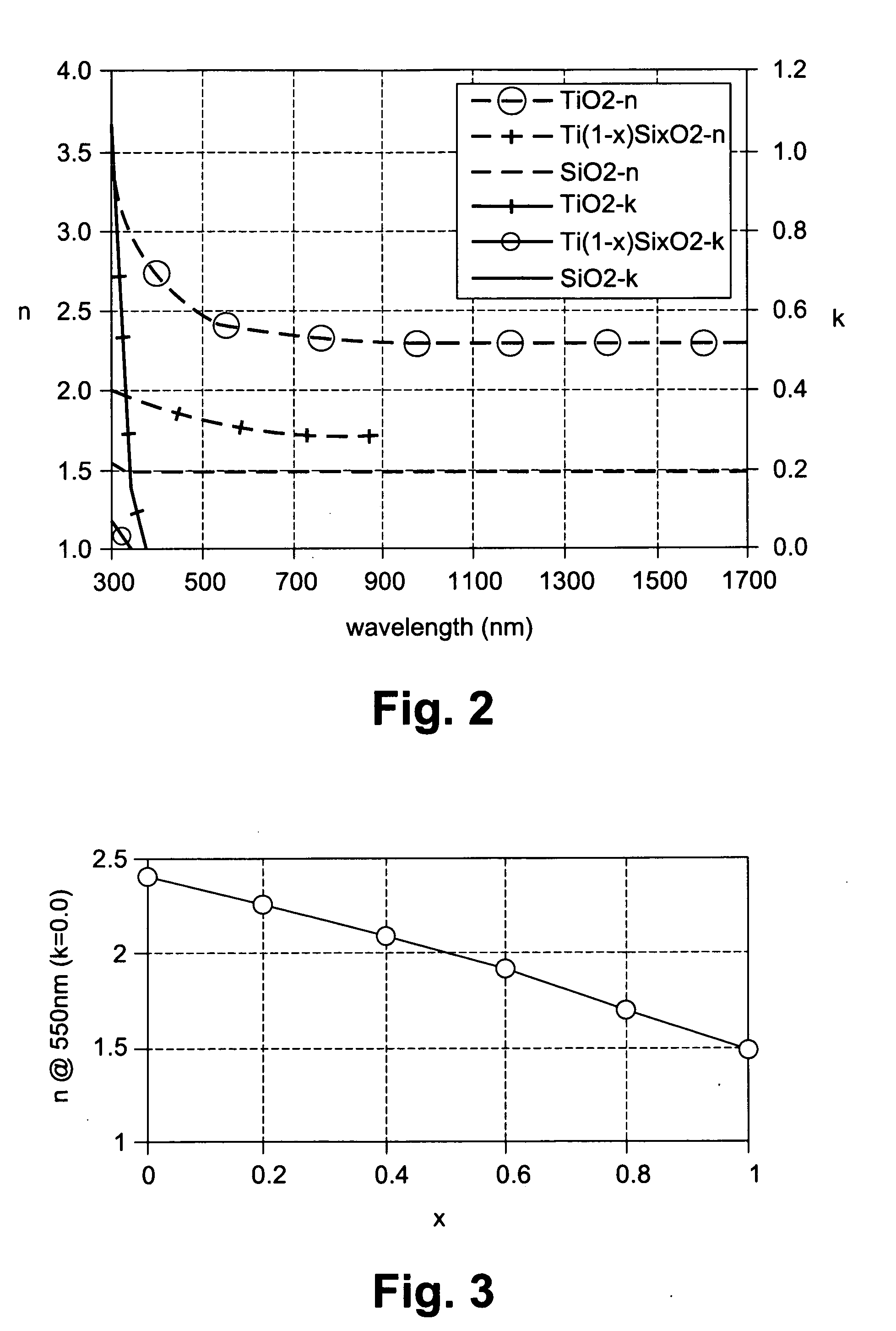Silicon titanium oxide coating, coated article including silicon titanium oxide coating, and method of making the same
a technology of silicon titanium oxide and coating, applied in the direction of instruments, optical elements, transportation and packaging, etc., can solve the problems of low deposition rate of metallic alloy metal targets in reactive sputtering, limited use of alloy metals as metal sputtering targets, and difficulty in mixing gas when sputtering metal or si targets, etc., to achieve lower sputtering rate, lower refraction index (n) value, and high refraction index
- Summary
- Abstract
- Description
- Claims
- Application Information
AI Technical Summary
Benefits of technology
Problems solved by technology
Method used
Image
Examples
Embodiment Construction
[0031]Performance of optical coatings such as low-E and / or antireflective (AR) coatings, especially multi-layered coatings for broadband applications, relies on precisely controlled layer thicknesses and optical properties (e.g., n and / or k) in each individual layer in the coating(s). Materials having unique properties, such as refractive index (n) and extinction coefficient (k), stress and adhesion to adjacent layers are chosen to optimize the coating performance with respect to reflection, color, durability, and / or the like. The target may be a rotating magnetron sputtering target in certain example embodiments although other types of target are also possible in other alternative embodiments. For example, a non-rotating target may be used instead and may be applicable to this invention. As an example, a drum coater may be designed in such a way that neither the target nor the drum holding the substrate rotates, but instead magnets in the target tube rotate.
[0032]Certain example em...
PUM
| Property | Measurement | Unit |
|---|---|---|
| thickness | aaaaa | aaaaa |
| thickness | aaaaa | aaaaa |
| thickness | aaaaa | aaaaa |
Abstract
Description
Claims
Application Information
 Login to View More
Login to View More - R&D
- Intellectual Property
- Life Sciences
- Materials
- Tech Scout
- Unparalleled Data Quality
- Higher Quality Content
- 60% Fewer Hallucinations
Browse by: Latest US Patents, China's latest patents, Technical Efficacy Thesaurus, Application Domain, Technology Topic, Popular Technical Reports.
© 2025 PatSnap. All rights reserved.Legal|Privacy policy|Modern Slavery Act Transparency Statement|Sitemap|About US| Contact US: help@patsnap.com



